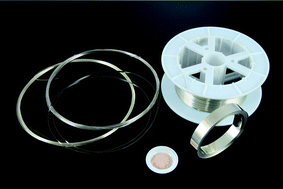Component analyses of silver brazing filler metals by inductively coupled plasma atomic emission spectrometry: a collaborative study for standardization
Abstract
A collaborative determination of the major components of silver brazing filler metals (Ag–Cu–Zn–Cd, Ag–Cu–Zn–Ni, and Ag–Cu–Zn–Sn alloys) by


 Please wait while we load your content...
Please wait while we load your content...